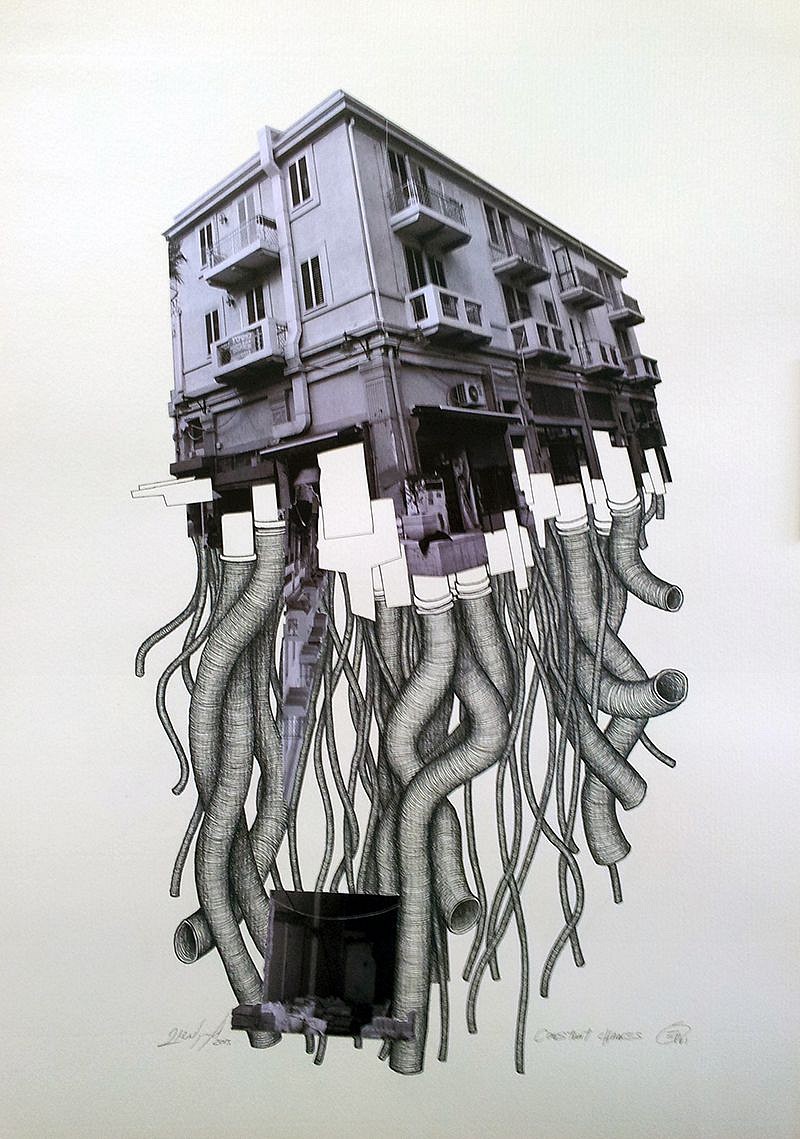PRESS RELEASE

Urbanism
Feb 20 – May 10, 2019
Urbanism is with-out a doubt one of the most important and influential phenomena of the twentieth and twenty first centuries. Artists, poets, writers, and philosophers are attracted to urbanism while channeling their fascination of this age to an active dialogue, a process of change in urban form which becomes a part of an artistic act. The exhibition features a collection of works which embody these trends of observing and exploring the urban space, alongside with critique about our environment. The works in the show, by Liat Livni and Amir Tomashov, represent the current urban space in the age of globalization and the local social-political surroundings. Amir Tomashov’s works deal with criticism over our urban surroundings that were constructed in a repetitive, schematic way and lacking an architectural identity. Tomashov works in a similar way to an architect by using a reversal and multi-layered technique to dismantle the surface only to rebuild it again with a deference. While using a technique of sketching and paper stencil, he reveals more than the eye can see, this enhances the connection between architecture and art, together with using ‘Ready-Made’ such as old book covers and leftover wood from the street. In recent years the city which Tomashov lives and works is under a construction momentum, and he involves this in his work together with local architecture. Liat Livni is an artist who often deals with simple, disposable materials that lack any artistic aura such as paper and wood. With these she creates urban structures and landscape that bring together nature and culture. Following an artist residency in Taiwan, Livni created the series of works Windows of Modernity (2012) as a paraphrase on traditional wooden curved windows. Inside the objects, which were made of sand and glue, are mundane images of skyscrapers, industrial buildings, cable car and more. At first it seems that Livni follows a traditional approach in her work, but a closer look reveals complexity of destruction of the old world in favor of progress and western technology. Another work in the exhibition, Reading (2016), also deals with this duality, depicting the mythological Tel Aviv power station, once an urban symbol of air pollution, which has now become a green public space. It seems that the fast changing reality, influenced by enormous economic and technological powers, effects on the way artists deal with their work. In a dynamic era that accelerate production, artists seek a way to involve their work with processes of urban construction and demolition in a new found boundaries. Curator: Meital Manor
Installation Photography: Youval Hai.

